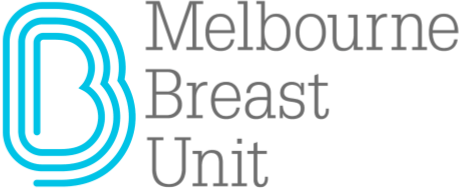Breast Aesthetics/Oncoplastic Surgery
What Is Breast Aesthetics?
Breast Aesthetics covers a number of planned surgical procedures which are available to improve the appearance of breasts, as a result of developmental problems, significant weight loss, or planned alongside breast cancer surgery - when it is termed ‘Oncoplastic Surgery’.
According to the patient’s needs, these include:
- reshaping and
- resizing breasts
Breast Aesthetics procedures are performed by an oncoplastic breast or plastic surgeon and are common procedures with or after breast cancer surgery. For example, an Oncoplastic Surgeon will perform breast reductions for patients with symptoms relating to their large breasts, together with similar but more technically challenging advanced procedures if breast cancer is present.
Types of Breast Aesthetics Surgery
Breast Aesthetics surgery can involve:
- Breast reduction, and breast reduction procedures as part of breast cancer treatment
- Breast lift (mastopexy), and breast lift as part of breast cancer treatment
- Breast enlargement (augmentation), and breast augmentation after breast cancer surgery
- Breast Symmetrisation (either reduction or augmentation) after breast cancer surgery
- Nipple reconstruction
- Breast reconstruction
- Lipomodelling / Lipofilling
- Male breast reduction.
How Does Breast Aesthetics Help?
After Cancer Surgery we strive to give our patients the most natural looking breast possible with the minimum of scarring.
Breast Aesthetic surgery helps women to regain a suitable breast appearance and can boost a sense of self-esteem and body image.
Some patients also state that Breast Aesthetic surgery can significantly help them psychologically, particularly during a very stressful time.
Breast Aesthetic surgery is also performed in cases where an individual wishes for a different appearance. A breast reduction as part of a breast cancer treatment can signal a whole new start in life for a patient at a very distressing time.
Why Is Breast Aesthetics Required?
A breast aesthetics procedure assists with:
- Improvement of scars,
- Balancing breasts in proportion with the patient’s body, and
- Achieving a natural look
When performed as part of breast cancer treatment, paying particular attention to the size and shape of the breasts can
- Facilitate delivery of other treatments to the breast, such as radiotherapy
- Help balance breast sizes and facilitate comfort when wearing a bra
- Treat pre-existing issues with large breasts – for example neck pain, back pain and shoulder grooving.
Breast Aesthetics’ surgery’s main aim is to achieve an optimised breast shape, which is proportionate to the patient's body.
Who Is Breast Aesthetics Suitable for?
Breast Aesthetics is suitable for any individual who is:
- Aged 18 and above
- Not suffering from chronic conditions such as hypertension and diabetes
- Not planning pregnancy or breastfeeding in the near future after the procedure
- As part of breast cancer surgery – known as Oncoplastic Surgery
- A non-smoker, and not suffering from a chronic inflammatory condition
Preparation Before Breast Aesthetics
Breast Aesthetics is an inpatient procedure, performed by an oncoplastic breast or plastic surgeon. In order to prepare for the surgery, the patient should be adequately counselled to ensure that the informed consent obtained is fully understood.
A thorough history and physical examination are completed to determine eligibility for the procedure, which will include lab tests and mammography. The patient and doctor discuss their expectations and probable final shapes of the breasts after the surgery.
The patient is also advised to stop smoking and possibly temporarily stop the use of anti-inflammatory medicines including aspirin before treatment, to reduce chances of bleeding.
Steps in Breast Aesthetics
Breast Aesthetics surgeries are performed under general anesthesia. The steps vary according to the procedure being performed.
- In breast reduction, an incision is made to remove excess breast fat and skin.
- In breast augmentation, an implant is inserted under the breast tissue after an incision is made.
- For Lipomodelling and Lipofilling, a lipo machine is used to redistribute the breast fat to achieve a better breast shape.
- In nipple reconstruction, the nipple is replaced and adjusted to a better location.
All the procedures end with either a Prevena or a gauze dressing application used to cover up the breasts and the patient is shifted to recovery after being awoken from anesthesia. Where possible, we are keen to use the Prevena Vacuum Dressing which will often stay in place for 1-2 weeks. This provides excellent healing outcomes as well as feeling very comfortable for patients in the postoperative period.
In certain cases, drainage tubes may be added to allow removal of excess fluid and blood.
The complete procedure can take two to three hours.
What Should I Expect After Breast Aesthetics?
Once stable, the patient is discharged, on the same day or after spending a night at the hospital.
The patient will also be prescribed pain medication and antibiotics, to be used as instructed. For the first few weeks, the breasts might be extra sensitive and tender, and there also can be swelling and bruising.
The doctor will advise the patient to limit physical activity for up to a month and allow the breasts to heal. The doctor will recommend the patient to make timely follow up visits to remove stitches and for monitoring recovery.
What Are the Possible Risk or Complications of Breast Aesthetics?
Breast aesthetics carries all the risks associated with major surgery, such as infection, bleeding and a severe allergic reaction to anesthesia.
In addition to these generalized risks, breast lift surgery can also lead to:
- Temporary bruising and more permanent scarring.
- Loss of feeling and sensation in the nipples and areolar region.
- Added difficulties or complete inability to do breastfeeding
- Symmetrical challenges, between the two breasts, in size and shape, requiring additional surgery to correct



